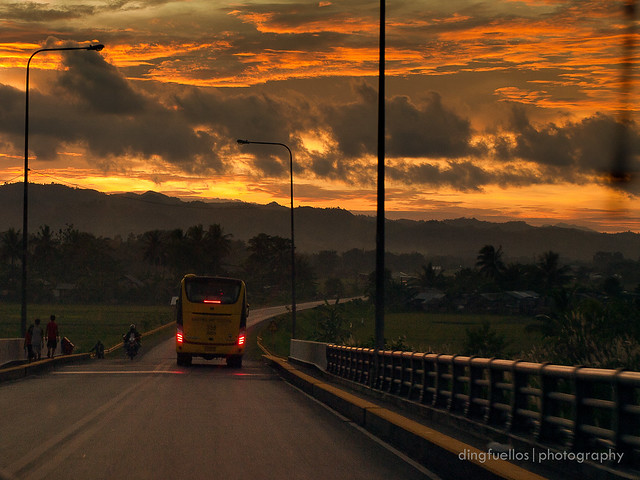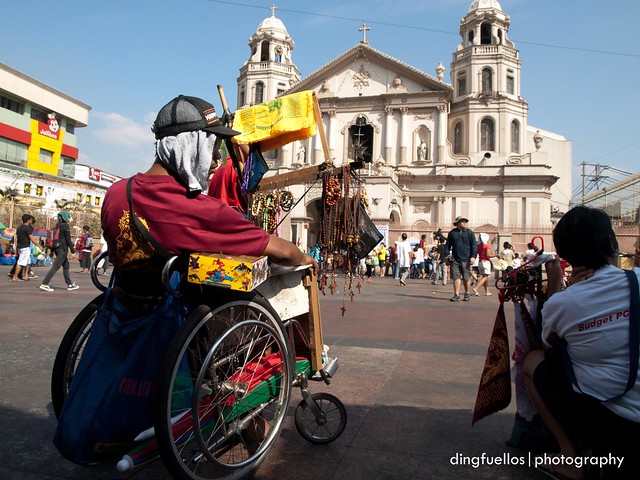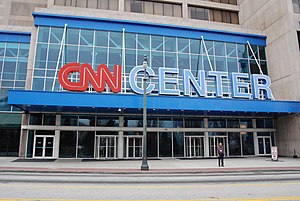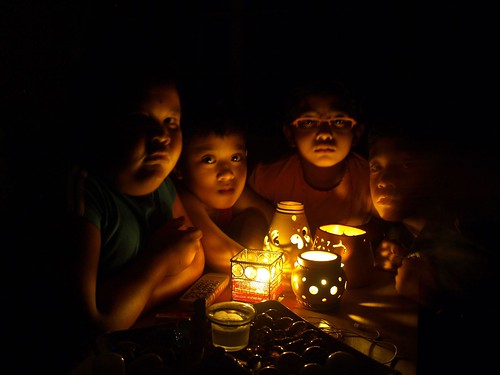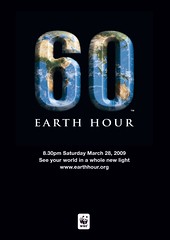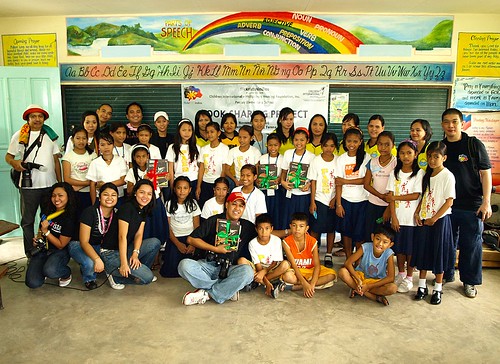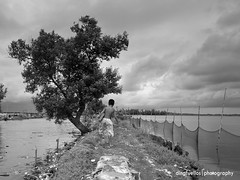Maej, my former work colleague tagged me in one of her photos, which happened to be ladies’ beauty accessories. And why would she tag me, I thought. I would never buy those. But then, I got curious about the material. So I asked. Apparently, it was crocheted out of recycled bags. Cool! And she was selling it, perhaps, thinking of me buying for wifey.
 |
| Photo by Joyce Mariscal |
Nonetheless, I quietly observed about this product—from a personal initiative, it was slowly evolving into social enterprise. And it is an opportune time to help a former colleague in her advocacy.
To cut the long story short, Maej resigned from a lucrative corporate job to concentrate on an unusual hobby-turned-advocacy: fashioning scraps into highly wearable accessories as livelihood for women. Hence, Loud Plastics Creation was born. And her formula? It is called CPR or
Creative recycling
+ Promoting household waste segregation
+ Reviving Philippine cottage industry (CPR)
Loud Plastics Creation is based in Davao City, Philippines.
Below is Inkblots’ Interview with Maej.
 |
| Photo by Ogs Ocleaza |
What started Loud Plastics Creations?
In 2009, I received a crocheted plastic bag from Invisible Sisters as a gift from a friend, Rebecca, and I adored it! I tried making a similar bag but I wasn’t able to finish it. The unfinished bag turned out to be a great accessory piece, and so I created my first “happy accident” necklace. I thought, if Manila and other countries like UK, US and Canada are into recyclables fever, then it’s high time that Davao and the rest of Mindanao region get a share of that “green infection”.
Who and what motivated you to pursue this project?
I give credit to my good friend and mentor, Rebecca “Bec” Gilllman, a former teacher in ISM (International School in Manila who is now based in Dar es Salaam, Tanzania) who opened my eyes to see the wonderful possibilities of recycling. She definitely “infected” me with her green movement. Last year, I had the chance to link with several other Manila-based community enterprises like Ann Wizer of Invisible Sisters, Lynie Pispisano of Philippine Christian Foundation and Jan Harris of Trashebolsas. And this inspired me more with a can-do attitude.
You employ crocheting as the primary skill in your products. Of all craft skills, why crocheting and why focus on fashion accessories?
 |
| Maej, showing her trainees the proper way of cutting plastic bags | | |
|
I’m a certified “craft-aholic” and grew up learning to crochet from my mom so I easily learned more in school under Home Economics. During my community outreach, I realized this specific skill set is no longer available among the younger generation. Most of those who know how to crochet are grandmothers, mothers or the elderly. Plus, crocheting is environmentally friendly in such a way that it does not make use of machineries, ergo, no energy waste. Through Loud Plastics, it is my own way to revive the interest again to learn to crochet and to stay true to being eco-friendly.
Wearing recyclables is a proactive way to start sending out a strong message about recycling, in its most “mainstream” form – a fashionable item. Women who wear loud plastics are those loud enough to advocate recycling in its most tangible form; they instantly represent the growing number of recycling advocates like me, therefore, “infecting” more and more people with the recyclables fever. It becomes easier for them to talk about recycling because people can see right away how these junks can be turned into something new again. My designs are not too gaudy either because I wanted more people to wear it, or to match with casual attire. After all, accessories are light weight and are definite conversational pieces.
What are the challenges in this project?
One of my many challenges is influencing the mindset of my target market – young professionals, women leaders, students, and mothers. Making recyclable accessories is completely doable; selling it to an available market at a competitive price is another story. Buyers need to be educated how difficult it is to make these pieces.
Take also in to consideration the packaging cost. Not too many consumers even realize that a huge amount they spent on a product goes to its packaging. To maintain true to my intention, labels used for our products are made from recyclables, too. As a social entrepreneur, I would rather spend on labor wage, creating social impact, rather than spend on packaging or plastic tags that will become additional junks.
Do you have links with communities and institutions now (network)? How are the communities responding to these initiatives?
It’s a simplified version of helping our communities in such a way that I provide skills and income for them (similar to “teaching a fisherman to fish and he will never beg for fish”). I do not see myself getting these recyclables from junk sorters, as this will tolerate people more not to mix their waste. I also encourage the communities I train to start segregating their waste.
I usually visit a community first and check what type of waste is usually available in their area and then I design a specific product line for them. I am keener in providing them the recyclables, because there’s a huge temptation for them to just buy new plastics to produce the requirements that I need. And that’s how I ensure that the pieces we sell are really made from recyclables. By tapping these communities as workforce, it is helping revive the Philippine cottage industry. The income they get is not much, but for people with so much idle time, and great skills, it is a lot.
You have to understand that these communities are in it for the money and then the recycling. I am in it for the recycling advocacy and the profit is just a bonus. The motivating factors are different. Hence, I have to be able to respond to their motivation.
For other communities that I’ve tapped, I made it a point to design a signature item for each group keeping in mind what is their available market. By doing so, I keep their motivation because they are able to sell and earn right away.
Furthermore, it eliminates competition which can result to “price war” and this is not good for a social enterprise to become sustainable. For example, I’ve taught the Cagwaitnons their signature piece, plastic crocheted lei, which they started producing for their first client, Cagwait LGU, in the annual Kaliguan Festival last June 2010. The municipality of Cagwait was a great avenue to share my skills since they have already in place a waste segregation program called ‘Cagwait’s Best’.” The workshop in Cagwait, Surigao del Sur was made possible through the invitation of Mayor Bonifacio Ondona.
Do you have any plans to bring in additional product line like bags, purses, etc?
Most recyclables available in the market (local & abroad) are bags and purses and I definitely do not want to compete with them. The accessories are my own unique line of collection. And I’m working on my signature line, where my pieces are convertible from necklace to bracelet, anklet or headband. I usually work on a piece based on creative instinct which means, I can never mass produce. Pretty much like dreamweavers where our ancestors receive a design through a dream, hence, each work is unique on its own.
 |
| Photo by Joyce Mariscal |
What is your vision for this venture?
For the brand to be visible in retail stores, souvenir shop and make its way in to the shopping list of every visiting Filipino abroad as pasalubong and take pride in Pinoy recycled arts & crafts.
For the venture to remain true to its intentions and maintain integrity by using only recyclables, where all items are 100% hand-crafted (no factories), therefore creating environment impact, and for the communities to embrace the habit of waste segregation and creative recycling. I hope to be able to come up with designs that can be labelled 100% recyclable, and using non-toxic materials such as adhesives or dyes.
This year, Loud Plastics Creations has taken it to the next level by getting a permit from DTI and other government agencies so we can aggressively bid our products as alternative items usually bought in event-driven market such as festivals, parties and weddings. Also, exporting the products will be within reach.
I’m also re- branding the collection From “Loud Plastics” to “PINASAHI Wearable Recyclables & Designs”. PINASAHI means “one-of-a-kind” in English or “naiiba” in Tagalog. It is named as such since I do not want to limit myself to just using recycled plastics. Plus, we cannot anticipate the type or volume of recyclables that we will receive. Hence, each piece is uniquely designed based on the available raw materials (recyclables). I do not see ourselves buying junk just to continue with the production for profit’s sake. It just defeats the purpose.
How would Loud Plastic Creation create an impact to the communities?
 |
| Photo by Ogs Ocleaza |
We need to compete with those mass-produced, China-made accessories. Taking a hand-crocheted bib necklace versus an assembled or premolded necklace, for example, the crocheted accessories are more labor-intensive, hence, cluld command a higher price. Buyers would become more conscious how the products are made (environment impact), and who the partner-beneficiaries are (workforce). In UK, buyers don’t question the price they have to pay for hand-made products. They have a huge amount of appreciation for handcrafted items and neither do they haggle nor negotiate for prices.
I strive very hard to be transparent to my customers as to where their money goes. For every piece that gets sold, the buyer creates a huge impact on the sustainability of the project. That I believe is the real value for money. And getting that message across becomes an additional challenge to hurdle.
The market for recyclables is getting bigger. Take for example here in Davao when my items were only saleable to foreigners. My raw materials are recyclables found at home and from friends’ houses and restaurants, I am highly dependent on donations. It is because of this growing number of buyers and donations that I get motivated. I have been approached by a local school that they want to join this initiative. It therefore validates further that the message is already out there, and more and more people are now getting in to the habit of recycling and the growing interest to be proactive about it.
____________
____________
*****
For donations of recyclables, please contact Maej Villanueva at 0918.9129767.
They need a steady source of recyclables which include the following:
- Clean, used plastic/cellophane or sando bags (those plastics that you cannot recycle as trash bags at home, the small-sized plastics)
- Old magazines, telephone directories, outdated flyers and product catalogues
- Corks from wine bottles
- Worn out rubber slippers or those with missing pairs
- Foil packs from chips, cereals, biscuits, candy wrappers, etc. and tetra pack juice packs
- Disposable lighters
- Shampoo sachets, old toothbrushes, and laundry powder sachets


